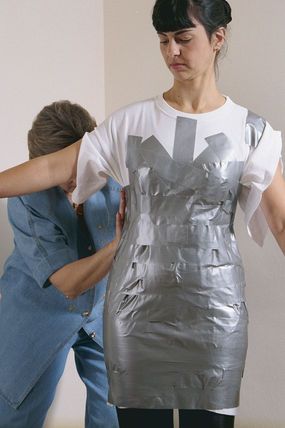
Making a DIY dress form from duct tape is a very popular, low-investment option for a custom dress form.
In Threads #185 (June/July 2016), special projects editor Stephani L. Miller detailed her experience with DittoForm, an innovative custom dress form service that creates a foam form based on a 3-D body scan. You can read all about DittoForm’s origins, its technology, and how the process works in the article and you can see more photos from the visit to DittoForms here. As promised, we’ve looked at other custom-manufactured or customizable dress form options for home sewers. Each has different features, benefits, limitations, and price points.
Uniquely You Pinnable Foam Form
Features: The form is made from a compressible polyurethane foam rubber. It is customized by fitting the form’s cotton cover to the sewer’s body. When the fitted cover is placed onto the form and zipped closed, it compresses the foam and forces it to fill out the cover, theoretically in the same way that the sewer’s body fills out the cover. A bust string cinches the fabric cover vertically between the form’s breasts for a more realistic contour. The form comes on an adjustable stand. Several blog posts and videos are online showing users’ experiences and sharing tips on how to make the form work for your figure.
Considerations: The form can’t replicate posture, and some users report that the bustline is either too low or too high for them, which the cover can’t change. Some users have described how they have hacked off the form’s bust area and glued it at the correct position or replaced it altogether with a stuffed bra. Others have found that the form is too well endowed and have had to reduce the bust manually. The form does not have collapsible shoulders.
Cost: At $149.99 plus shipping (AllBrands.com), it is inexpensive, but can be labor intensive.
www.allbrands.com/products/3900-uniquely-you-pinable-foam-best-dress-form-customiz
Fabulous Fit Dress Form Fitting System
Features: The Fabulous Fit system comprises 17 contoured foam pads and a knit cover to hold them in place on the dress form of your choice. The pads are designed to add contours and fullness to specific areas on the body, but are interchangeable for use in whatever way necessary to re-create a person’s shape and size on a dress form. This is a highly customizable and easily adaptable option for reproducing an individual’s figure, and it allows a single dress form to be changed to fit different people or to be adjusted for a changed figure. The padding system allows users to duplicate their curves, proportions, and size. If you already own a dress form, you only need to buy the padding system, so it can be an affordable option.
Considerations: It may be tricky for the uninitiated to precisely duplicate postural anomalies on a dress form, but the Fabulous Fit website offers videos and other aids to getting the shape just right. Note that pads can shift when using a professional dress form’s collapsible shoulder. More than one pad kit may be needed.
Cost: MSRP $127 for the padding system, although it is usually on sale at a lower price.
www.fabulousfit.com
Professional Custom Dress Forms (Wolf, PGM, Andy’s.)
Features: Custom professional dress forms offer several features and options that DIY forms cannot, such as pinnable linen covers, collapsible shoulders, skirt cage and full-body bifurcated options, traditional papier-mâché construction, and cast-iron adjustable bases. Manufacturers such as Wolf, PGM, and Andy’s offer a custom dress form service to replicate an individual’s measurements and body shape. A company representative may be available to take the client’s measurements in person (for a fee), or the client may submit a comprehensive set of measurements they take themselves. Custom professional dress forms are considered the top-of-the-line custom option. From order to delivery may take up to 90 days.
Considerations: The required lead time is substantial, and dress forms are generally shipped freight, which is expensive. Extra fees may be required to correct measurement problems.
Cost: Cost varies by manufacturer, but it is based on the cost to manufacture the form and a charge for the custom service (creating a custom mold) and fitting. A custom professional dress form from Wolf or PGM starts at about $1,300 for a misses’ half-body (skirt form) model; this does not include freight shipping.
www.wolfforms.com
www.pgmdressform.com
www.andysdressform.com
Adjustable/Dial-a-size Dress Forms
Features: Widely available online or through big-box fabric stores, dial-a-size dress forms are easy to use, adjustable, pinnable, and come in several size types (such as petite, misses, and plus). Embedded dials (some internal, some external) enable the forms’ circumferences to be adjusted up or down in what the manufacturers call “precise increments,” and most offer adjustability in the back-waist length. The foam-backed nylon covers are pinnable. Some models come on stands with casters, while others are on stationary foldaway tripod bases. Most models also come with a pin hem marker or hem gauge attached to the stand. Some have shaped hips and derrieres to assist with pants fitting. Dritz offers five models, and Singer offers two models.
Considerations: While the dimensions can be adjusted to match a user’s measurements, they don’t necessarily match the user’s true proportions front to back, so the form can’t duplicate the user’s body; it can only provide an approximation. The forms can’t mimic the user’s posture. The forms’ shoulders are not collapsible.
Cost: MSRP $229 – $289, but often listed at greatly reduced prices where they are sold
www.dritz.com
www.singer.com
www.amazon.com
www.joann.com
Duct tape/Paper tape DIY dress form
Features: One of the least expensive options is to make a DIY dress form from duct tape or paper tape. If done well, this options provides a fairly accurate duplicate of an individual’s body. There are many articles, including “Clone Yourself a Dress Form” in Threads #75 (Feb./March 1998): https://www.threadsmagazine.com/item/3659/clone-yourself-a-dress-form/page/all), blog posts, and video tutorials on how to make one. They are relatively easy to make.
Considerations: The form’s reliability depends on the partner who does the taping; if they do a sloppy job, the form may be inaccurate or it may not hold up well. Some DIYers have had great success and are very satisfied with their tape forms, others have had opposite experiences. A tape form is not as sturdy as a manufactured form, and it is not pinnable. It’s easy to overfill the form’s cavity if using expanding foam, which can stretch the tape beyond the individual’s measurements. Some DIYers have found that this type of dress form collapses on itself if stuffed with batting instead of filled with foam. You have to either rig a stand for the form, or purchase a medical IV stand.
Cost: The price of materials, time, elbow grease, and a stand.
Plaster mold form
Features: DIY forms cast from plaster molds are filled with expanding foam or cast in papier-mâché and filled with batting. They can accurately replicate the body’s shape, contours, proportions, and posture. Their biggest benefits are durability, accuracy, and cost.
Considerations: They are messy and time-consuming to make. The first step is to create the mold, then cast the form, then cover it. Like a DIY tape form, a plaster-mold form requires a dedicated partner to do the wrapping. The raw cast form must be covered in fabric and batting to create a smooth, pinnable surface. You have to make your own stand or purchase a medical IV stand.
Cost: The price of the materials and tools, a stand, time, and elbow grease.


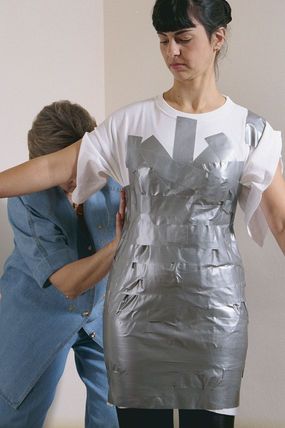
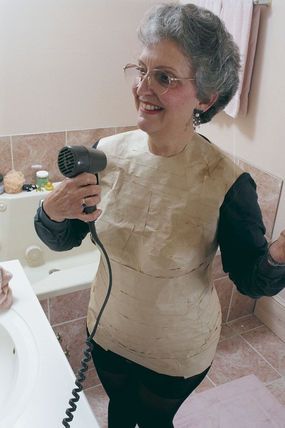
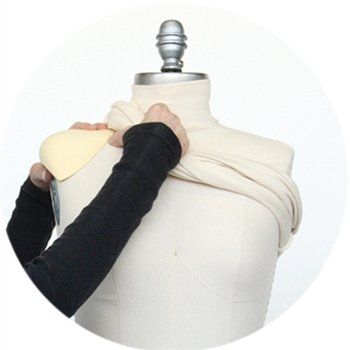
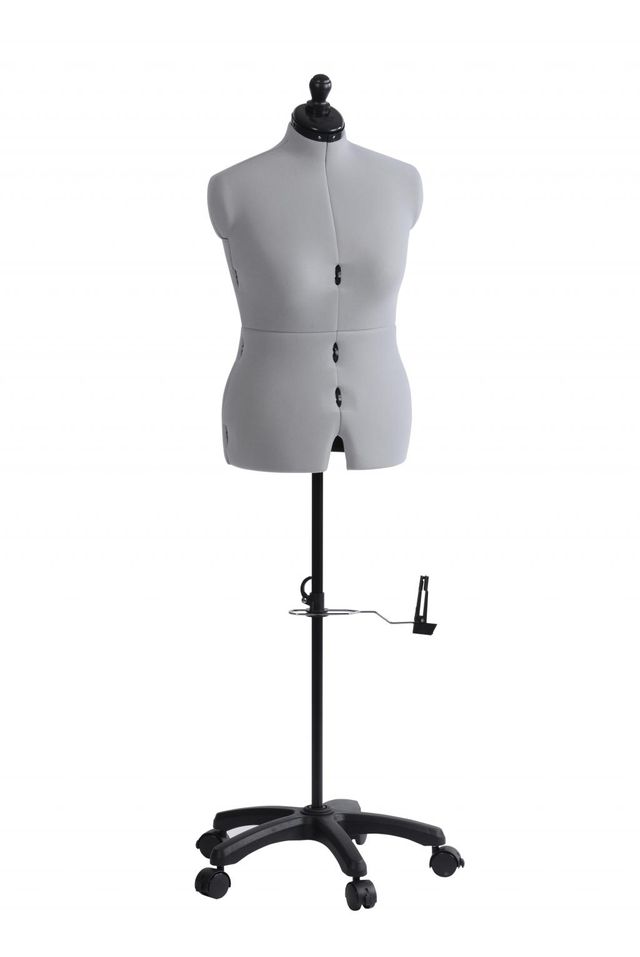
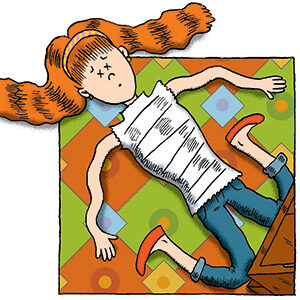
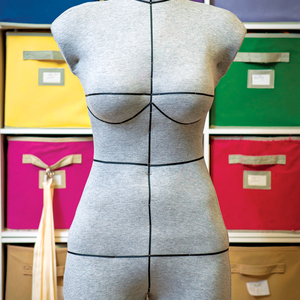

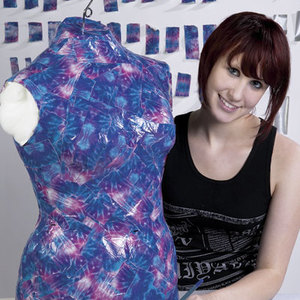
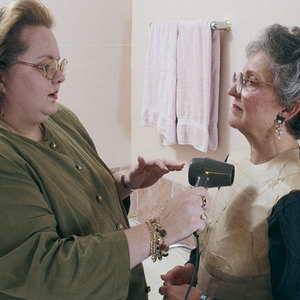

























The duct tape dress form is brilliant. I never thought one could get such a nice effect with such low costs.
It seems to me, getting any dress double just right requires a second person with sewing/fitting skills. I've tried to instruct a non-sewing friend in making a duct tape double for me, even having her watch a video of the process, with no success. I bought a Uniquely You dress form, but again, I need someone with sewing/fitting skills to pin the alterations while I was wearing the "skin". It's frustrating that you need a second sewer to get to a place where you don't need a second sewer!
I've done this twice. Once, duct taped in Chicago and shipped home (to VA), the second time with brown paper tape. We worked with a partner, each wetting and wrapping each other. Wrapped from shoulders down to hip, tape overlapping for sturdiness, then wait to dry. Next step was to cut down the center back to take it off, more tape up and down the CB to close it up. Took it home, and placed it on an individual metal coat stand that had enough support at the shoulders to hang it on. Duplicated my shape perfectly.
Placed a white t-shirt tightly over it and marked CB, CF and my actual bust points. noticed for the first time where my real waist was (front and back) and how my back curved (forward shoulders and waist). And it's durable.
Still did not appreciate it fully until I could no longer stand as long as I used to. But now I can sit on a bench or stool and pin patterns onto the tshirt noting what I need to raise or lower, widen or take in. Fewer surprises with finished garments an is my most valuable tool.
The pre-made forms can't duplicate your shape nor will a bunch of pads be able to. If you ever get the opportunity to be taped, go for it. It's an investment that will pay you back.
Original project:D
If you draft a pattern block to your measurements and fill it with some type of fiber would that be an accurate pinnable dress form?